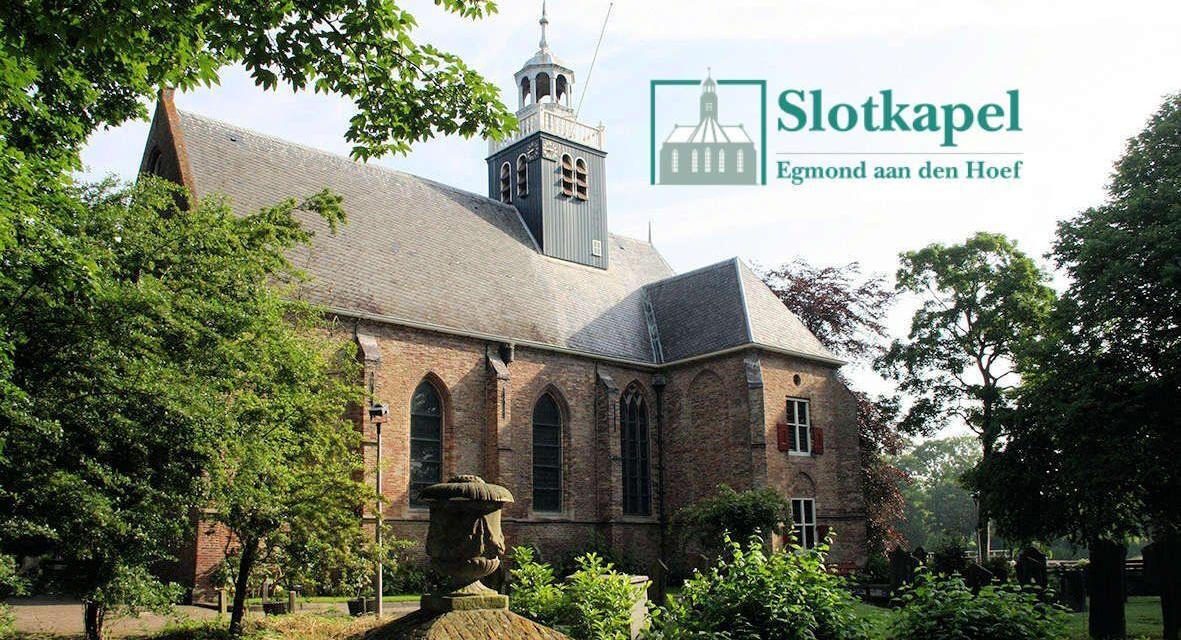
The Castle Chapel (former St. Catherine’s Church) at Egmond aan den Hoef
In 1229, by order of Willem I of Egmont, the first Castle Chapel was built. It was consecrated on Oct. 8 of gen. year by Bishop Hermannus of Utrecht and dedicated to St. Catherine, St. Mary and St. Nicholas. William I died in 1234 in Stadingerland on the Elbe River. His heart was buried in his chapel. His wife, Jonkvrouwe Badeloch van Amstel, who died in 1244, was also interred in the Castle Chapel.
According to the chronicle of Dirk Wouters (The House of Egmont 1565), the chapel was demolished in 1431 by John II of Egmont (John with the bells) and rebuilt in its present form. The gable stone in the west facade attests to this. In the same year, he founded a chapter of six canons and attached them to the Castle Chapel. Thus, the chapel became a so-called “own church,” independent of the abbey. The chapter owned over 80 acres of land in 1573, located in the Inner Emmonden.
The chandeliers, wall fixtures and candelabra date from 1913. A restoration committee was again formed in 1960, and things could be restored from 1960 to 1966. In 1983, it was determined that the Castle Chapel was in very poor structural condition. However, the N.H. Church lacked funds. On 4-1-1984, the Castle Chapel Restoration Foundation was established.
As of 19-8-1987, she is the owner. On July 7, 1986, the Final Chapel Use Foundation was established. It takes care of cultural activities. Said Foundations and the administrator together provide a significant portion of the income which, supported by grants, donations and bequests, can be spent on the preservation of this historic building.
Aug. 2014: Jos Hof, pl. historian, board member of Foundations Restoration and Use of Castle Chapel.
Over a year later, the restoration was a fact and the chapel was transferred by the States of Holland to the Nederl. Reformed Congregation. In the tower, installed in 1680, hung a swinging bell made by Wolfart Beeldsnyder. It was replaced in 1750 by one cast by Johan Verbruggen. The clockwork displayed in the chapel loft dates from about 1640 and is still from the steward’s tower of the Castle. Because of the danger of collapse of this tower, the Lady of Egmond had the clock moved to the chapel in 1832. The pendulum technique, invented in 1656 by Christiaan Huygens, was applied to this timepiece.

The Slotkapel on Slotweg can now only be visited during church, cultural and other events such as concerts, the museum weekend, commemoration on May 4, presentation of the Egmond Culture Prize, art market , open monument days and receptions. The chapel is also a popular wedding venue. During the fall and winter seasons, there are regular concerts, often on Sunday afternoons.
A great opportunity to experience the special atmosphere.
However, the foundations of the Slot op den Hoef can be visited freely and then the Slotkapel can be admired from the outside.
For information on the Castle Chapel, see www.slotkapel-egmond.nl
